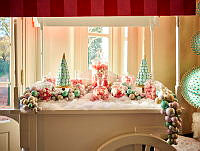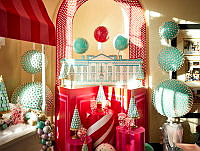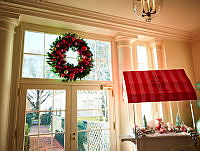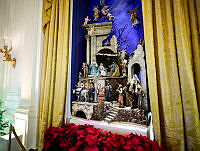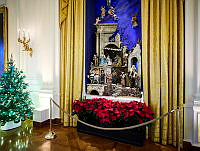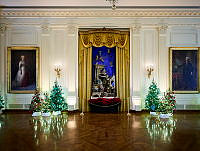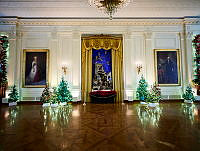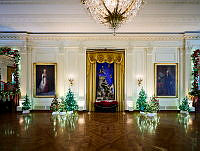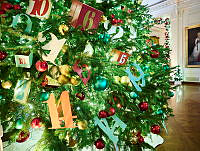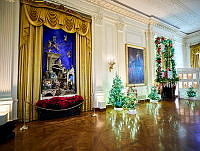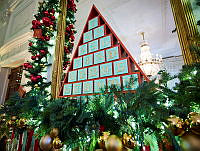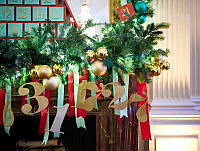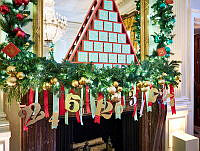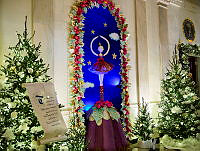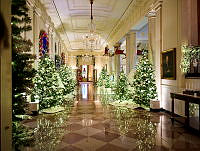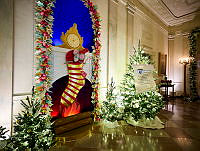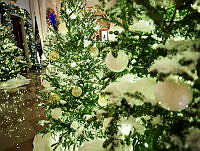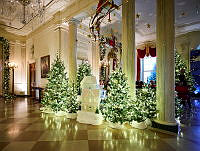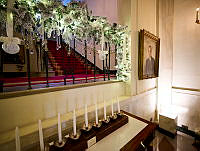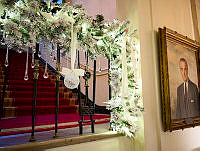An Essay on "Visitors from the East" by Peter Waddell
President Buchanan Greets Visitors From Far Away, 1860
Copyright © White House Historical Association. All rights reserved under international copyright conventions. No part of this article may be reproduced or utilized in any form or by any means, electronic or mechanical, including photocopying, recording, or by any information storage and retrieval system, without permission in writing from the publisher. Requests for reprint permissions should be addressed to books@whha.org

Peter Waddell, Visitors From the East, oil on canvas, 48 x 60.
Peter Waddell for the White House Historical AssociationThose who lived it remembered the 1850s as the most elegant era the white House had ever known. Emerged from the war with Mexico, its western boundary stretched to the Pacific Ocean, the United States was rich with promise, and while the decade was cursed by economic crisis in the Panic of 1857 and the violent debate over slavery, few would deny the social splendor of the decade at the White House.
The White House in the 1850s was central to the diplomatic community in Washington, just as it is today. Foreign countries began sending their representatives to the United States as soon as the nation was formed. Well-educated, refined and worldly, the diplomats, all male, were well funded by their native countries to live noticeably. They gave an international sheen to the workaday capital.
The artist takes us here to a spring evening in 1860 when the first representatives of Japan have come to call upon President James Buchanan. Their visit was a response to the late Commodore Matthew Calbraith Perry's 1852-1854 expedition to Japan and the resulting treaty that opened trade with the United States. Styled ambassadors, the party consisted of three samurai and their entourage of seventy-four attendants. Some of the gifts they brought to the president remain in the White House today. Most of the other diplomats seen here carried as their official title, Minister. Along with their wives, they arrived in fine carriages with the president's other guests, military leaders, luminaries from Congress, and prominent citizens. Surviving diaries, letters, and reports reveal that the Japanese visitors found the Americans disorganized, emotional, and too informal, quite unlike the Americans, who were fascinated by their guests and massed in crowds to see them.
Buchanan's White House was perfection itself. A hospitable, decorous man, Buchanan and his niece Harriet Lane greet the guests here with handshakes and welcoming words. In so elegant a setting, politics and passions were already paving the road to civil war. The last hours of antebellum America are captured in this tranquil twilight moment among the columns of the President's House.













